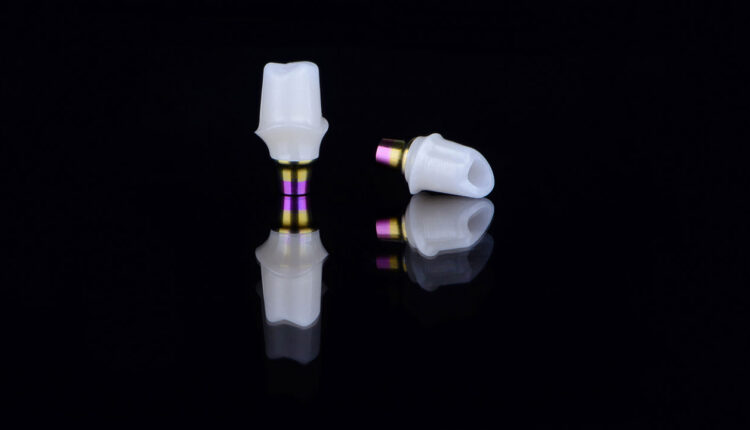
Preventing Screw Complications in Implant Restorations
Screw loosening and stripping are common and costly complications in screw-retained implant restorations, especially when angulation comes into play. Understanding the mechanics and risks can help clinicians prevent damage and keep restorations stable for the long haul.
Screw-retained restorations offer clinical advantages, especially when it comes to retrievability and eliminating the risks associated with residual cement. However, they are not without complications. Screw loosening, stripping, and even fracture can compromise implant longevity and lead to both mechanical and biological consequences. With the growing use of angled screw channel abutments, it’s more important than ever for clinicians to understand the forces at play and the steps they can take to minimize these risks.
Screw loosening is a common complication associated with screw-retained restorations. The reported incidence varies within the literature with some finding the incidence as high as 60%.1 Screw loosening may cause irreversible damage to the prosthesis or fracture of the implant body due to unstable off-axis loading. Although screw loosening is mainly a mechanical complication, it can lead to the biological complication of microleakage between the implant and abutment, causing crestal bone loss.2 Furthermore, the implant connection plays a large role in the frequency of screw loosening, with external-connection implants demonstrating a higher frequency than internal-connection implants.1
The incidence of screw loosening and loss of screw integrity (stripping and fracture) is higher among restorations requiring an angled abutment or angled screw channel. Furthermore, the occurrence of screw loosening and failure increases as abutment angulation increases.3,4 This is because greater stress is applied to the prosthetic components of an angled abutment, compared to a straight abutment.4
Angled screw channel abutments are a newer prosthetic design that allow for malposed implants to be restored with a screw-retained restoration that would otherwise need to be restored as a cement-retained restoration. The largest advantage to this approach is that it eliminates the biological risk of residual excess cement associated with cement-retained restorations.
Angled screw channel abutments are associated with a higher risk of screw-head stripping.5 The abutment screw head is designed with a hexalobular shape that is engaged with a sphere-shaped screwdriver at various angles.6 The benefit of this design is also the weak point of the design. Tightening of the abutment screw can be done at an angle off-center from the long-axis of the implant, which is advantageous, however, it is also the reason why there is a greater risk of screw-head stripping.6
Tightening of a loose abutment screw can easily be done with a screw-retained restoration. It is always best to confirm that the abutment screw is intact prior to retightening and retorquing it. Furthermore, proper torquing of the abutment screw, which includes a preload torque and final torque, can minimize the incidence of screw loosening.1
Preloading is the initial tightening force placed on the abutment screw that results in screw stretching. The force applied secures the implant-abutment connection which reduces microleakage at that junction.2
A few measures can be taken to minimize screw stripping such as using a manufacturer-specified driver and torque wrench to tighten the screw and verify the screw head is free of debris so that the driver can fully seat and engage the screw head. Removal of a stripped or fractured screw usually requires a screw removal kit. The process is typically very tedious and time consuming; therefore, preventing screw stripping and fracture is important.
References
- Sadid-Zadeh R, Kutkut A, Kim H. Prosthetic failure in implant dentistry. Dent Clin North Am. 2015;59:195-214.
- Sagheb K, Gorgen CI, Döll S, Schmidtmann I, Wentaschek S. Preload and friction in an implant-abutment-screw complex including a carbon-coated titanium alloy abutment screw: an in vitro study. Int J Implant Dent. 2023;9:1-9.
- Al-Zordk W, Al-Dobaisi T, Ghazy M. Torque maintenance of screw-retained implant-supported anterior fixed dental prosthesis with different abutment angulations after aging. Int J Oral Maxillofac Implants. 2021;36:723-729.
- Cavallaro J Jr., Greenstein G. Angled implant abutments: a practical application of available knowledge. J Am Dent Assoc. 2011;142:150-158.
- Bai X, Zhu X, Liu Y, Zhang J, Zhour Y. A method of removing the stripped abutment screw from the angled screw channel: technical details and a clinical report. J Prosthet Dent. 2023;23:415-418.
- Rasaie V, Abduo J, Falahchai M. Clinical and laboratory outcomes of angled screw channel implant prosthesis: a systematic review. Eur J Dent. 2022;16:488-499.
This information originally appeared in Casarez-Quintana AR. Enhancing long-term success with screw-retained implants. Dimensions of Dental Hygiene. 2024;10(5):10-14.

